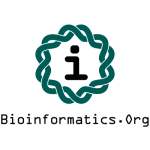
home
about argo
antibiotic resistance
classification
β - lactamase
gene finder
submit sequence
links
acknowledgements
Antibiotic resistance
The Introduction of antibiotics in medicine was accidental with the discovery of penicillin by Alexander Fleming in 1928. During Second World War period, technology for mass production of penicillin was optimized and golden era of antimicrobial chemotherapy was ushered in. Antibiotics were considered as wonder drugs that kill infectious bacteria without significantly harming the host. After more than 50 years of widespread use, however, many antibiotics don't pack the same punch they once did.
Bacteria have devised methods to inactivate most antibiotics including vancomycin. Many diseases are increasingly difficult to treat because of the emergence of drug-resistant organisms including HIV and other viruses; bacteria such as staphylococci, enterococci, and E. coli; respiratory infections, such as tuberculosis and influenza; food-borne pathogens such as Salmonella and Campylobacter, sexually transmitted organisms such as Neisseria gonorrhoeae; Candida and other fungal infections; and parasites such as Plasmodium falciparum, the cause of malaria.
If the trend continues unchecked, the antimicrobial chemotherapy will be ineffective and a general bacterial infection can become deadly. To control this we need to have sufficient data on the spread and prevalence if antibiotic resistance genes in microbes organized in a systematic manner.
Antibiotic Resistance Genes Online (ARGO) is a database envisaging to collect & catalogue all the antibiotic resistance genes in bacteria. As β-lactamases are the biggest class of antibiotic resistance gene category and contribute to almost 50% of all known antibiotic resistance incidences, we as the first version, has assembled the all β-lactamase genes in bacteria. User can search the database based on host organism, country of origin, year of reporting, gene name, category of gene and also see the polymorphism pattern of particular gene from that of the parental sequence. Click on help to get more assistance on searching & using the database.
